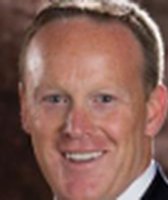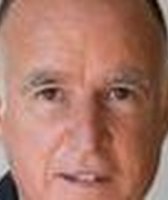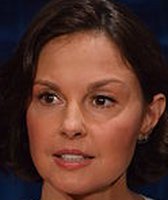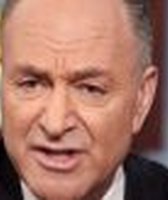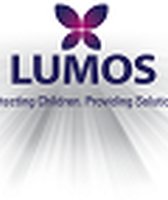Get PolitiFact in your inbox.
President Donald Trump delivered a 16-minute inaugural address that emphasized his populist campaign themes, promising to drain the Washington swamp and revitalize manufacturing and the middle class.
With his left hand atop two Bibles, Trump repeated the oath of office after Supreme Court Chief Justice John Roberts at noon on Jan. 20, 2017, to become the 45th president of the United States.
"From this day forward, it’s going to be only America first. America first," Trump said. "Every decision on trade, on taxes, on immigration, on foreign affairs, will be made to benefit American workers and American families."
Trump urged a diverse and divided nation to remember they are united through "the red blood of patriots."
"In America we understand that a nation is only living as it is striving," Trump said. "We will no longer accept politicians who are all talk and no action, constantly complaining but never doing anything about it."
Joining Trump on the platform of the U.S. Capitol were newly inaugurated Vice President Mike Pence, Trump’s wife, Melania, Trump’s three sons and two daughters, and former presidents Barack Obama, George W. Bush, Bill Clinton and Jimmy Carter. Hillary Clinton, the Democratic challenger Trump defeated Nov. 8, was there, too.
A light but cold drizzle fell as Trump began to speak. Some in the crowd wore suits and ties, while others chose camouflage, cowboy hats and "Make America Great Again: caps from the campaign. They didn't seem to notice the Code Pink protester who ran up to the front of the crowd directly below Trump, yelling "Trump is an illegitimate president."
Trump delivered his message unfazed. Here are moments from Trump’s speech, with added context and fact-checks. (We will update this story as more fact-checks are published.)
"You came by the tens of millions to become part of a historic movement, the likes of which the world has never seen before."
After thanking the Obamas, Trump devoted the moment to his supporters, "the likes of which the world has never seen." Trump’s victory took the pollsters and political establishment by surprise, that is for sure.
His victory was not unprecedented, however, in terms of votes in the Electoral College, and he lost the popular vote to Clinton by less than 3 million.
He won almost 57 percent of the available votes in the Electoral College, which puts him in the bottom quarter of presidents in American history, and no better than the bottom one-third since the end of World War II.
Ronald Reagan won 98 percent of Electoral College votes in 1984, the highest in the post-World War II era. Bill Clinton won 70 percent in 1996, and Barack Obama won 68 percent in 2008.
As for the size of his inauguration crowd, we’re still waiting on the estimates. However, it’s clear from photos and traffic that Obama’s inaugurations drew more people. An estimated 1.8 million people were in Washington for Barack Obama’s 2009 inauguration — considered to be the record for the number of people on the National Mall. Organizers for Trump’s inauguration said they expected between 700,000 and 900,000 people.
"Mothers and children trapped in poverty in our inner cities."
Trump offered a less specific version of a campaign talking point on African-American poverty.
In an October 2016 rally in Ohio, Trump said nearly half of black children are in "abject poverty." That was accurate for the depths of the recession, but the poverty rate in 2015 was 37 percent. By another metric of "abject poverty," those living at half of the poverty level, Trump’s claim is less accurate. That rate is 20.4 percent for black children under age 5.
Nationally, the black poverty rate in 2015 was 24.1 percent, which is much higher than the 9.1 percent for whites.
"An education system flush with cash, but which leaves our young and beautiful students deprived of all knowledge"
Rhetorical flourishes aside, Trump is right that we don’t get enough bang for our education bucks.
Out of the 34 member nations of the Organization for Economic Cooperation and Development, the United States ranked third for per pupil spending at $11,700 at the elementary and secondary level in 2012 (Switzerland was No. 1 at $15,500).
But looking at test scores, American students’ performance is mediocre. In math, American teens ranked No. 26 out of 34 participating countries.
"The crime and the gangs and the drugs that have stolen too many lives and robbed our country of so much unrealized potential"
Trump vowed to be a law-and-order president during the campaign, frequently citing inaccurate or misleading statistics on crime. He did not include specific numbers in his inaugural speech, but his message of rampant crime across the country often ran counter to data.
Crime and illegal immigration are at a decades-long low. Annual data from the FBI has shown a steady decline in crime since the early 1990s, though there was a slight uptick in 2015. Apprehensions at the border have also gone down in the past two two decades.
"We’ve defended other nation's borders while refusing to defend our own."
This is the closest Trump came to mentioning his signature campaign promise — building a wall and making Mexico pay for it. Trump has characterized the border patrol as overstressed, promising also to triple the size of immigration enforcement.
Trump is speaking in hyperbole, clearly, since U.S. Customs and Border Control and Immigration and Customs Enforcement have not refused to defend the border in the Obama era.
Trump has a point that challenges exist in patrolling some parts of the border.
A 2011 report from U.S. Customs and Border Protection said 873 miles of the almost 2,000-mile U.S.-Mexico border was under "operational control." Of the other 56 percent, two-thirds were monitored, but limited resources made responding to illegal entries difficult.The agency defined the rest of the border as "low-level monitored," and both detecting and responding to illegal entries were constrained by few resources or poor infrastructure.
We’ve "spent trillions of dollars overseas"
Trump, who during the campaign repeatedly knocked the Iraq war as the worst foreign policy decision in modern history, brought up the price tag of U.S. intervention abroad.
Estimates for the cost of the wars in Iraq and Afghanistan range between $1.6 trillion to $6 trillion. The high end of that range also reflects future obligations like veterans’ medical and disability costs. Facturing in cumulative interest on borrowing, one credible estimate gets us to $7.9 trillion by 2053.
We’ve "subsidized the armies of other countries while allowing for the very sad depletion of our military"
Rebuilding the military is a day-one priority for Trump, but his talking point about the military being depleted is exaggerated.
Military spending has decreased under Obama, largely due to the administration’s decision to remove troops from Iraq and Afghanistan (a position partly supported by Trump). Still, the United States’ defense budget is larger than the next seven to eight countries’ combined.
Similarly, the number of ground troops and Navy ships have sunk, but experts say, regardless of size, the Army and Navy of today are much more capable than they were decades ago.
"We’ve made other countries rich while the wealth … of our country has dissipated over the horizon."
To bolster his "America First" theme, Trump claimed that the United States is losing its wealth to other nations.
But that’s largely inaccurate. Wages in the United States have fluctuated over the years and its economy dipped during the Great Recession. China, on the other hand, has grown at a faster rate and its wages have steadily increased. But the United States is still the wealthiest country in the world.
Looking at the gross domestic product, or GDP, the United States has the largest economy economy in the world ($18 trillion), one-third wealthier than the second largest economy, China. Looking at GDP per capita, the United States is still the wealthiest country in the world, with Germany and Japan in second and third respectively. China, with a population of 1.3 billion people, drops to No. 83 on a per capita basis.
We rated Trump’s claim Mostly False.
"We will follow two simple rules: Buy American and hire American."
Along with bringing back jobs, defending the border and rebuilding the infrastructure, Trump promised to revitalize America with "American hands and American labor."
Trump did not strictly abide by that principle as a businessman.
Trump-brand shirts are made in Bangladesh, vodka in the Netherlands, crystal barware in Slovenia (where first lady Melania Trump is from), and cufflinks and ties in China. His iconic Make America Great Hats, though, are made in California.
Similarly, Trump hired 200 undocumented Polish immigrants to do demolition work on the future site of Trump Tower, and sought hundreds of visas to hire foreign workers for his Mar-A-Lago Club in Florida.
Beyond the address
The official transition of power also included revisions of official government websites.
White House pages on climate change, civil rights and LGBT rights appear to have disappeared in the early hours of the Trump presidency. But our friends at Snopes pointed out that all Obama administration content has been archived, and the current White House website features just a few pages.
One of the pages about Trump’s foreign policy claims that the "Navy has shrunk from more than 500 ships in 1991 to 275 in 2016." We rated that claim Mostly True.
The numbers for annual fleet sizes are accurate, but size is no guarantee of military might. The ships of today are more powerful than those in 1991.
PolitiFact is tracking 102 promises made by President Trump on the Trump-O-Meter. See them all here.
Correction: A previous version of this article misstated Hillary Clinton's lead in the popular vote.
Our Sources
Recording of Donald Trump's speech, Jan. 20, 2017
See fact-checks linked within
















